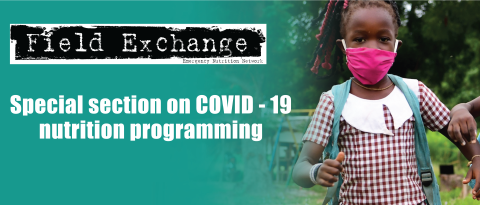Improving complementary feeding practices through smartphone-based maternal education in Iran
Research snapshot1
Mothers’ poor nutrition-related knowledge, attitudes and practices are considered to be major causes of malnutrition in children, along with socio-economic and environmental factors. The growing ownership of smartphones offers a cost-effective platform to provide evidence-based health information and behavioural change interventions. Researchers assessed whether providing mothers with nutritional education through a smartphone application would have an effect on child undernutrition in a food-secure environment over a period of six months.
Children under three years of age with moderate or severe malnutrition (“wasting”, defined by weight-for-height z-score (WHZ) <-2) and/or underweight (defined by weight-for-age z-score (WAZ) <-2) and/or stunting (defined by height-for-age z-score (HAZ) <-2) were recruited with their mothers in a well-child clinic in Urmia, Iran. The children and mothers were randomly assigned to either the intervention group (smartphone-based maternal nutrition education covering principles based on child age, child feeding behaviour, timing and appropriate introduction of complementary feeding and mothers’ health) or the control group (routine health service treatment as usual which included the provision of standard nutrition information during regular check-ups).
Between baseline and endline, mothers in the intervention group showed greater and statistically significant improvement in the three indicators of nutrition literacy (critical knowledge, feeding attitudes and nutritional practice) compared to the women in the control group. Children in the intervention group showed greater positive change compared to the control group in their nutrition status: WHZ increased by +0.34 ± 0.26 (p <.05), WAZ increased by +0.35 ± 0.20 (p<.05) and HAZ increased by +0.34 ± 0.21 (p<.05). More children in the intervention group recovered from wasting (WHZ <-2) and underweight (WAZ <-2) than children in the control group (p<.05) while no statistically significant change was observed for stunting (HAZ<-2). At endline, 6% of the children were wasted in the intervention group compared with 32% in the control group.
The six-month smartphone-based maternal nutrition education programme on complementary feeding was more effective than standard routine nutrition information for correcting wasting and underweight among children under three years of age in middle-income food-secure communities. Although HAZ status improved, stunting rates did not which can be explained by the relatively short intervention period.
1Seyyedi, N, Rahimi, B, Eslamlou, H R F, Afshar, H L, Spreco, A and Timpka, T (2020) Smartphone-Based Maternal Education for the Complementary Feeding of Undernourished Children Under 3 Years of Age in Food-Secure Communities: Randomised Controlled Trial in Urmia, Iran. Nutrients, 12(2), 587. doi:10.3390/nu12020587


